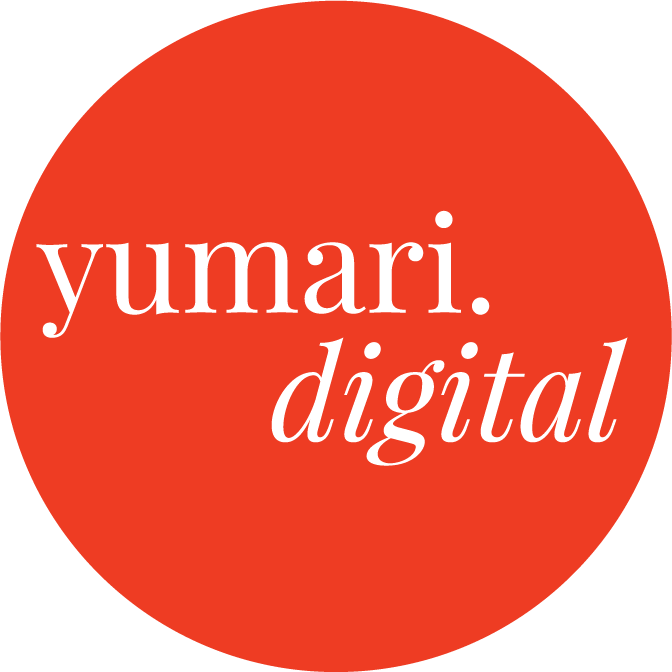The 5 Keys to a Strong Elevator Pitch
You may have heard this advice — “Make sure your elevator pitch is clear and quick.” But what does that entail?
Read below to learn about the 5 key elements of a powerful elevator pitch.
(In turn, your new and improved pitch can clarify your website, social media, email campaigns, and other online presence for better sales!)
1 |
role
What role or purpose does your business serve for customers/clients? Your role should be a concise noun, and it can be used on your website SEO (think: website title,) in your social media name, and anywhere else that including a title would make sense.
Ask yourself:
What do we do?
What product or service are we selling?
You might serve more than one role, and that’s a good thing! However, it’s important to boil down that large list of what you do into something bite-sized.
This is simplified from “website design/online advertising/logo design/branding/email campaigns/SEO/etc.”
For Yumari Digital, our role is “marketing and creative agency.”
2 |
offering
Your offering can be discovered using the questions you asked yourself above, and it will also be a noun.
What you provide to clients/customers might be a single item, but if you have multiple items, they should be consolidated into easy-to-digest categories wherever possible. Simplifying your offerings into main categories will relax your audience.
For us, we have 5 main offerings that are listed throughout our website, emails, and other online presence:
Websites
Emails & SMS
Online Ads
Graphic Design
Social Media
What is your offering, and how can you consolidate it into a few nouns?
3 |
customer
By naming who your customer or client is, you can improve the outcome of your marketing and sales efforts.
You can niche down into a specific type (“general contractors looking for more SFR projects in the Maryland area,”) or you can zoom out to name a larger market (“construction contractors.”)
You might have many categories of customer/client — in that instance, try to find a common thread among all of them. What traits do they share?
Our client is “small business owner” — this is kept more generalized because we enjoy working with multiple industries across the globe, but we are specific about working with smaller companies.
Naming and representing your customer or client on your website, social media, advertising, and other marketing is a powerful way to connect with your target market.
4 |
benefit
This is the most important part of a sales and marketing message — if there’s any key to focus on, it’s this one. By including the benefit of your offering, you’re signaling to your audience that you care about helping them, and therefore, you should be a trusted resource.
Example of what Yumari Digital’s pitch is looking like so far, with the benefit underlined:
“We are a marketing and creative agency that focuses on functional and attractive websites, emails & SMS, online ads, and social media so that small business owners can focus on scaling up and doing what they do best: delivering amazing products to their customers.”
5 |
objection
Including a possible objection in your pitch is for bonus points because it might seem counterintuitive. By stating a common objection in your pitch, you can also state a solution, allowing you to deliver an extra ounce of value for your audience.
Example:
“Even if our clients aren’t tech-savvy or visually creative, Yumari Digital can simplify the marketing process for clients and make their online presence look polished, professional, and ready for more business.”

